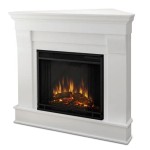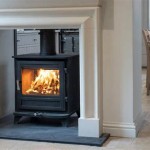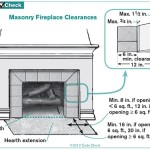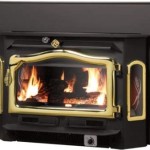Fireplace Padding for Babies: Ensuring a Safe Home Environment
The presence of a fireplace in a home often evokes feelings of warmth and comfort. However, for families with young children, particularly babies, a fireplace can pose significant safety hazards. The hard surfaces and sharp edges of a fireplace hearth, in conjunction with the intense heat generated during operation, necessitate the implementation of effective safety measures. Fireplace padding, specifically designed for babyproofing, offers a crucial layer of protection, mitigating the risk of injury from falls and accidental contact with hot surfaces.
Babies and toddlers are naturally curious and mobile, exploring their environment with limited understanding of potential dangers. Their developing motor skills and coordination can lead to frequent stumbles and falls. A fireplace hearth, typically constructed from stone, brick, or other hard materials, presents a substantial impact hazard. Furthermore, the heat emanating from a lit fireplace can cause burns upon contact. Therefore, selecting and installing appropriate fireplace padding is a vital component of a comprehensive home safety plan.
Understanding the Risks Associated with Fireplaces
The risks associated with fireplaces for babies and toddlers are multifaceted. Firstly, the hard edges and corners of the hearth pose a significant risk of head injuries. A fall against a sharp edge can result in cuts, bruises, or, in more severe cases, concussions or fractures. The height of the hearth also contributes to the risk, as even a short fall onto a hard surface can cause injury. It is important to consider the composition of the fireplace material. Stone, brick, and concrete are unforgiving materials. A baby isn't able to brace for a fall. The material contributes to the potential of significant injuries.
Secondly, the operational heat of a fireplace introduces the hazard of burns. Even after the fire has died down, the surfaces of the fireplace, including the hearth, surround, and firebox, can retain heat for an extended period. A curious baby touching these surfaces can suffer painful burns. The severity of the burn depends on the duration of contact and the temperature of the surface. It's important also to consider the fireplace accessories a home uses. Fireplace tools, such as pokers and tongs, can become dangerous hazards if left within a baby's reach.
Thirdly, the visual appeal of a fireplace, particularly the flames, can be highly attractive to babies. This attraction can lead them to approach the fireplace unsupervised, increasing the risk of burns or other injuries. Often times fireplace come with glass doors. Although these doors provide some protection from the flames, they themselves can become extremely hot during operation. It's important to protect a child from this heat source as well.
Types of Fireplace Padding Available
The market offers a variety of fireplace padding solutions designed to childproof fireplaces. These solutions vary in materials, design, and installation methods. Understanding the different types available allows caregivers to select the most appropriate option for their specific fireplace and needs.
One common type is foam padding, typically made from dense, impact-absorbing foam. Foam padding is available in various thicknesses and shapes, including rectangular strips, corner guards, and full hearth covers. These pads are often applied using adhesive strips, allowing for relatively easy installation and removal. The thickness of the foam directly affects its ability to absorb impact, so selecting an appropriate thickness is crucial. It's imperative to select non-toxic foam padding, as babies may mouth or chew on the padding.
Another option is inflatable padding, which utilizes air-filled chambers to cushion impacts. Inflatable padding can be particularly effective at absorbing energy from falls and reducing the risk of injury. These are typically made from durable, puncture-resistant materials. It's important to note that inflatable padding may require periodic inflation to maintain its effectiveness.
Custom-made fireplace padding offers a tailored solution for fireplaces with unusual shapes or dimensions. These pads are typically fabricated from durable materials, such as high-impact plastic or fabric-covered foam. Custom-made padding can provide a seamless and aesthetically pleasing appearance while providing comprehensive protection. The expense of custom-made solutions will naturally be higher.
Corner guards are specifically designed to protect against injuries from sharp corners. These guards are typically made from soft, flexible materials like silicone or rubber and are easily attached to corners using adhesive. Corner guards are an essential component of fireplace padding, particularly for fireplaces with sharp, protruding corners.
Finally, consider fireplace gates. These aren't strictly "padding," but they provide a physical barrier preventing access to the fireplace area entirely. These gates are typically constructed from metal or wood and can be adjusted to fit different fireplace sizes. They offer a high level of protection but may not be suitable for all fireplace designs.
Factors to Consider When Choosing Fireplace Padding
Selecting the appropriate fireplace padding involves careful consideration of several factors. These factors include the fireplace design, the material of the hearth, the age and mobility of the child, and the overall aesthetic preferences of the caregiver. Prioritizing safety while maintaining the visual appeal of the home is important. It's important to remember that it may be necessary to adapt the level of padding as the child grows and develops new motor skills.
Firstly, the dimensions and shape of the fireplace hearth must be accurately measured to ensure a proper fit. Padding that is too small will leave areas exposed, while padding that is too large may be difficult to install and may not provide adequate protection. Consider that a child may be able to move or displace padding that is not fastened to the fireplace appropriately.
Secondly, the material of the hearth influences the level of padding required. Harder materials, such as stone or brick, necessitate thicker and more impact-absorbing padding compared to softer materials like wood. The texture of the hearth also plays a role, as rough surfaces may require padding with a smoother surface to prevent abrasions. The material of a baby's clothing should also be taken into consideration. Softer materials will require more padding.
Thirdly, the age and mobility of the child should be considered. Younger babies with limited mobility may require less padding than older toddlers who are actively exploring their environment. As children develop new skills, such as crawling, walking, and climbing, the level of padding may need to be adjusted accordingly. Also consider the child's temperament. More active or daring children need more padding than passive children.
Fourthly, the ease of installation and removal should be taken into account. Padding that is easy to install and remove allows for convenient cleaning and maintenance. Adhesive-based padding should use non-toxic adhesives that are strong enough to securely attach the padding but also allow for removal without damaging the hearth surface. Consider the ease of cleaning the pad, since babies can cause a lot of messes.
Fifthly, the durability and longevity of the padding should be considered. Padding made from high-quality materials will withstand wear and tear and provide long-lasting protection. Consider the potential for damage from sunlight or heat, and select padding that is resistant to these factors. The material should also be durable enough to withstand regular cleaning.
Sixth, aesthetic considerations are important. While safety is paramount, caregivers may also want to choose padding that complements the decor of their home. Padding is available in various colors and styles, allowing caregivers to select an option that is both functional and visually appealing. Some padding can even be painted to match existing decor.
Seventh, consider any potential allergies the child may have to the materials used in the padding. Latex, for example, is a common allergen. Select hypoallergenic materials to minimize the risk of allergic reactions. Always read the labels of the padding to ascertain if it contains any known allergens.
Finally, the budget for fireplace padding is a consideration. While safety should be prioritized, caregivers may need to balance cost with the level of protection provided. Compare the prices of different types of padding and consider the long-term cost-effectiveness of each option. Remember that a significant injury can ultimately be much more costly than a higher-priced but higher-quality padding product.
By carefully considering these factors, caregivers can select the most appropriate fireplace padding to ensure a safe and comfortable home environment for their babies.

Baby Proofing Fireplace More Easy Hearth Padding Oh Love Proof House

Babysafetyfoam Com Baby Proofing Fireplace Hearth Guard Bumper Pad Safety Cushion Cover Protection

How To Baby Proof A Fireplace Diy Hearth Cushion Simply September

How To Baby Proof A Fireplace Diy Hearth Cushion Simply September

Baby Safety Foam Soft Seat Edge Cushion Fireplace Hearth Guard Bumper Pad Child Proof Padding

How To Baby Proof A Fireplace Diy Hearth Cushion Simply September

Diy Baby Proofing Your Brick Fireplace Thisaveragemom

Jack Mat Hearth Safety Seat The And Home

61 To 72 Long Custom Hearthsoft Cushion For Fireplace 21 28 Deep By Hearth Seat Free

Cardinal Gates Fireplace Cushion Hearth Pads Brown Spk Br C The Home Depot
Related Posts








